ORIF - Plate fixation
1. Introduction
The critical step of this procedure is to achieve anatomical reduction as the angle of the glenoid has a direct influence on the functional outcome.
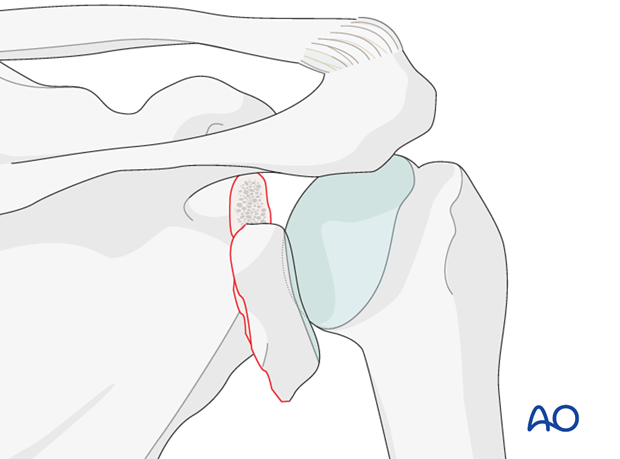
To achieve sufficient purchase of the screws in the scapular body, the plate is placed along the lateral border of the scapula.
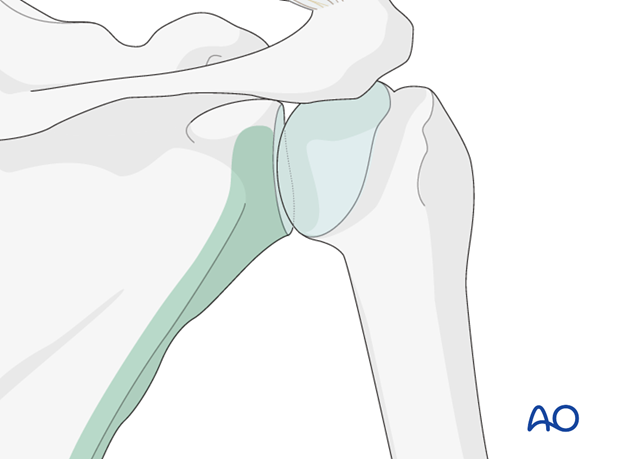
Hardware selection
The standard plate for this fixation is the 2.7 or a 3.5 reconstruction plate.
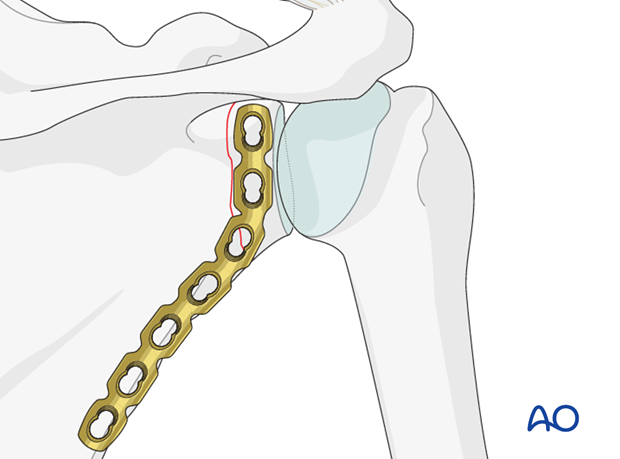
2. Patient preparation
This procedure may be performed with the patient in either a prone position or lateral decubitus position.
3. Approach
Plating of the glenoid neck and scapula is performed through a posterior approach.
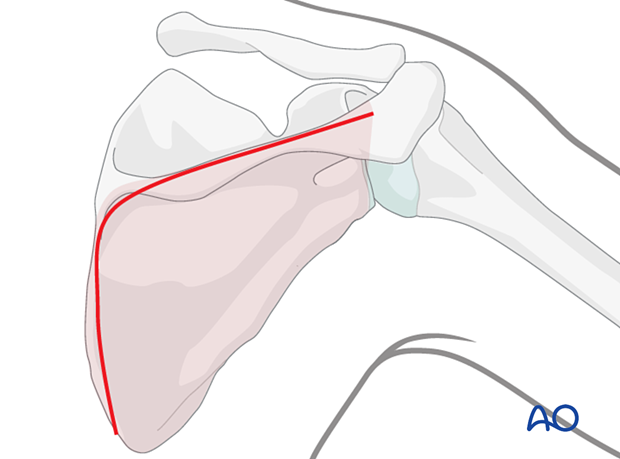
4. Reduction and fixation
Reduction
Reduction may be facilitated by the insertion of one or two K-wires to be used as joysticks for reduction.

K-wires are inserted for temporary fixation. Care should be taken that the position of the K-wires does not interfere with the planned position of plate and screws.
The joint block is reduced to restore the anatomical angle of the glenoid fossa. Large deviations of the angle (>20 °) will reduce the functional outcome.
If the reduction is not successful, an alternative procedure where the plate is used as a reduction aid can be employed (see below).
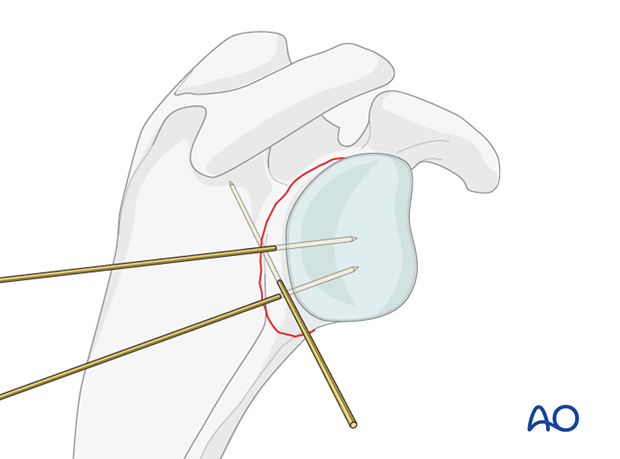
A plate of sufficient length should be chosen to allow for the placement of 3 screws in the lateral border of the scapula.
The reconstruction plate is contoured to a near perfect anatomical fit.
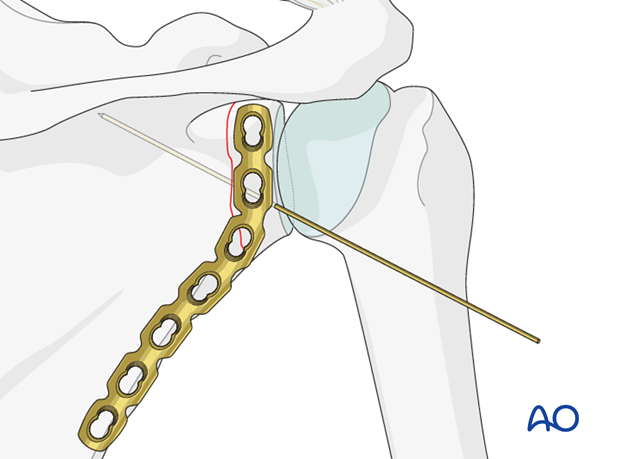
At least two screws are necessary for sufficient fixation of the glenoid joint block.
Ideally, three bicortical screws are inserted in the lateral scapular border. If the bone stock is poor, locking screws are indicated.
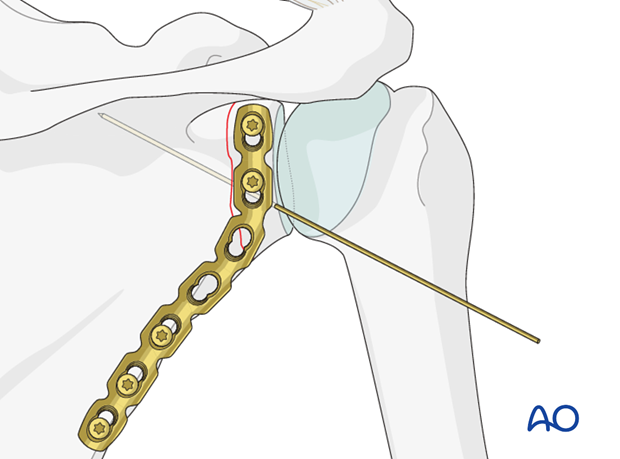
5. Alternative reduction and fixation using an angle stable plate
It is best to use a reconstruction plate designed to take angularly stable screws.
The plate is bent at the right spot to subtend the usual angle between the glenoid and the lateral border of the scapula (130 - 135 degrees).
Up to 10 degrees deviation from the anatomically correct angle can be tolerated.
When angularly stable fixation is used the plate does not have to fit the bone, but must fit the overall contour.

The plate is fixed to the glenoid segment with two bicortical screws.
If locking screws are used, care must be taken regarding their direction so that they do not enter the joint.
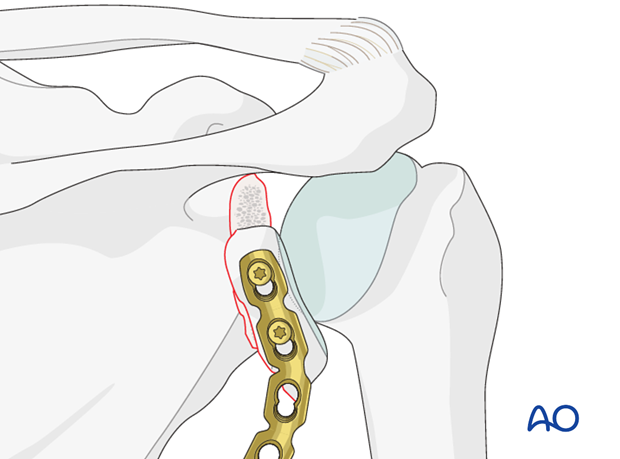
The plate is then used as a reduction aid.
Large deviations of the angle (>20 °) will reduce the functional outcome.
A trans-glenoid X-ray is recorded to verify whether the anatomical angle is achieved.
When the correct reduction and the correct angle between the glenoid fossa and the lateral border of the scapula have been achieved, screws are inserted along the lateral border of the scapula.
If indicated, use locking screws and in the articular block beware that they do not enter the joint.
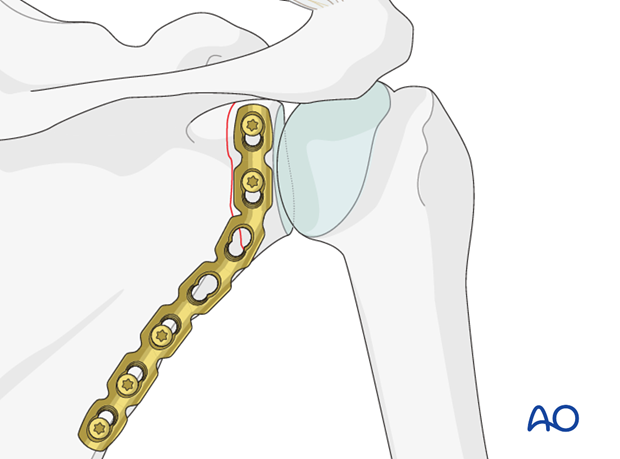
Correct reduction and fixation is verified by image intensification.
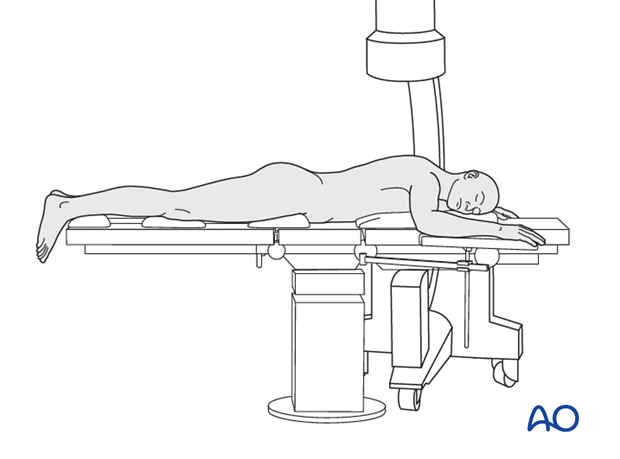
6. Aftercare
The aftercare can be divided into 4 phases:
- Inflammatory phase (week 1–3)
- Early repair phase (week 4–6)
- Late repair and early tissue remodeling phase (week 7–12)
- Remodeling and reintegration phase (week 13 onwards)
Full details on each phase can be found here.













